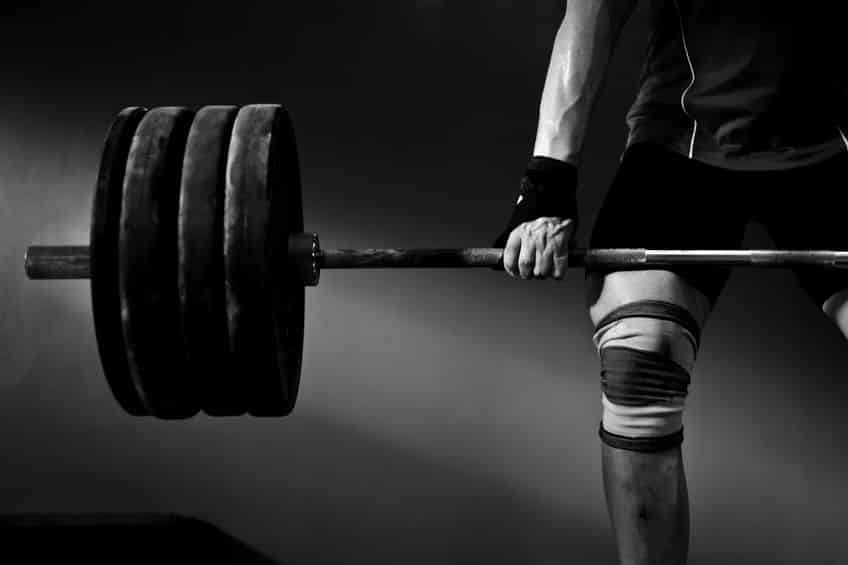Ascending Loading For Massive Strength Gains
August 17, 2015
Ascending loading, also known as ramp loading, is the best loading protocol to build strength and muscle quickly.
Consider the following:
When you’re a beginner, straight work sets are a phenomenal method to stimulate massive gains in strength, performance, and muscle.
But there’s a problem:
5×5 at 85% 1-RM gets increasingly difficult the more time you spend under the bar.
No longer is 85% a 185lb squat. It’s now 300-350 lbs.
That’s a significantly more demanding training stress on your joints, muscles, nervous system…and psyche.
Soon, you’re no longer smashing your sets at 185lbs with two minutes of rest in-between. Far from it.
Now, you’re heaving and hawing and missing reps by your third set.
By the fifth set, you’re cashed, pissed at your ineptitude, and questioning “whether this program even works.”
Yes, straight sets are great for beginners to build strength, mass, and athleticism. But as you improve in the gym, your methods must adapt to the greater demands of hard training.
Basically, you need to lift smarter by activating the nervous system while managing fatigue with ascending loading schemes to maximize gains in strength and muscle.
Ascending loading, also known as ramping up, takes away the guesswork. It gradually activates the nervous system with progressively heavier weights. This leads to what you want: your heaviest work sets at the end of the exercise.
You’ll lift heavy enough and with enough volume to stimulate progress. But you’ll prevent the body from bombing out and missing reps, and frying your nervous system.
Ascending Loading Explained
I already know what you’re thinking;
“Won’t ramping up by using lighter loads early on minimize my training gains?”
This is a valid concern, but misguided. Rather than using everything in the tank early on, you’re making more calculated moves. The idea is to take home the gold by leaving something in the tank for when it counts: towards the end. ap.
Submaximal sets aren’t for naught. Lighter work sets of 50-60% 1-RM allow you to focus on the most important components of your workout. You’ll maximize the execution of each rep, rather than getting excessively fatigued early on.
In other words, submaximal ramping sets help you minimize fatigue during early work sets, honing in on exercise technique, maximizing bar speed, and prepping the nervous system for domination of the heaviest strength sets.
Here’s what it looks like in action:
Ascending Loading and CNS Potentiation
The driving force behind ascending loading schemes is potentiating the nervous system and muscles for greater levels of performance. At the same time, you’ll intelligently manage fatigue associated with lifting big weights.
To better understand this, a few things happen to the nervous system after a heavy resistance exercise.
First:
According to Hamada et. el (2000), there is increased phosphorylation of myosin regulatory light chains during a maximum voluntary contraction (MVC).
This allows the actin and myosin binding (for muscle contraction) to react to the increased calcium release. This reaction triggers a cascade of events leading to enhanced force muscle production at the structural level of muscle (Horwath & Kravitz).
Thus, increased muscle activation yields a greater duration of calcium ions in the muscle cell environment, yielding a greater phosphorylation of the myosin light chain protein (Rixon et al. 2007).
In other words, bar moving the bar as fast as possible and/or against a heavy load you improve force production at the muscular level.
Second:
The second theory is based on the H-reflex, an excitation of a spinal reflex elicited by afferent muscle nerves. It is theorized that the PAP intervention enhances the H-reflex, thus increasing the efficiency and rate of the nerve impulses to the muscle (Robbins, 2005).
Basically, your nervous system gets all jacked up and is prepared for increasingly heavier loads when you maximally contract the muscles through heavyweight or maximal bar speed.
When fatigue is managed in conjunction with increased nervous system function you have the recipe to generate more force and in this case, lift heavier weights.
Putting It All Together
Ascending loading schemes allow you to:
- refine technique
- reinforce coordination
- manage fatigue
- ramp the nervous system
You’ll lift increasingly heavier weights, driving your high-performance training forward.
Ascending Loading: Ramping up with straight sets to (5×2, 5×3, 4×4, 5×5) (60-95% 1-RM)
Ramping with straight sets is a commonly prescribed method of ascending loading. To start, use a moderate training load (60%1-RM) for the prescribed number of reps and build your way up (ascending loading) to the heaviest set with rep range of the day.
Through each set, increase load by 5-10% each set, aiming to reach your heaviest set in 4-6 sets. Ramping sets work better for advanced lifters as straight sets with heavier loads provide tons of cumulative fatigue.
As Siff and Verkhoshansky state in SuperTraining, increasingly heavier loads elicit positive affect-effects to the CNS, improving both speed and strength as long as the after affects stimulation and fatigue are managed (Siff, 1999).
In other words, as you increase the load you “charge” the nervous system with consistently heavier loads.
Novice trainees might not get enough of a training response to benefit from submaximal ramping sets. But as your abilities progress, ascending loading with straight sets is more effective than straight-sets with a consistently higher workload.
Sample: 5×2
Squat Training Max: 405 lbs
Heaviest Workload for the Day: 95% 1-RM= 385lbs
Warm-Up: 135×5; 185×5
Work Sets:
1) 225×2
2) 275×2
3) 315×2
4) 365×2
5) 385×2
Ascending Loading: Descending Rep Schemes: 5×5,4, 3,2,1; 4×6, 4,2,2
Ascending loading is a method that utilizes lighter weights with higher rep sets, while getting progressively heavier while dropping the number of reps per set.
Similar to straight sets, increasingly heavier loads stimulate the CNS to improve performance as long as fatigue is kept to a minimum.
For Example:
Sample: 5×5, 4,3,2,1
Power Clean Max: 300 lbs
Heaviest Workload for the Day: 85% 1-RM= 255lbs
Warm-Up: 135×3, 155×2
Work Sets:
1) 195×5 (65%)
2) 210×4 (70%)
3) 225×3 (75%)
4) 240×2 (80%)
5) 255×1 (85%)
Ascending Loading: Wrap Up
Straight sets are fine when you’re starting out. But as your experience improves your methods must adapt to your new levels of performance. That means smarter loading schemes, like the ascending loading schemes above to improve your performance in two big ways.
First, the ascending loads prepare the lifter mentally for increasingly heavier loads. Heavy lifting as much of a mental battle as it is physical— you have to be prepared to struggle to reap the rewards of your efforts.
Second, as loading increases, the body stays potentiated from the previous sets due to increased neural activation. As long as fatigue is managed with proper rest periods, ascending loading prepares the lifter for higher performance during each set and greater gains in strength and muscle.
If you’re looking for a proven way to build muscle and lose body fat with ascending loading, grab your copy of the Chiseled Muscle Cheatsheet.
Citations:
Hamada T, Sale DG, MacDougall JD, Tarnopolsky MA. Postactivation potentiation, fiber type, and twitch contraction time in human knee extensor muscles. J Appl Physiol. 2000 Jun;88(6):2131-7.
Horwath, R., & Kravitz , L. (n.d.). postactivation potentiation: A brief review. Informally published manuscript, Exercise Science , Retrieved from http://www.unm.edu/~lkravitz/Article folder/postactivationUNM.html
Rixon KP, Lamont HS, Bemben M. Influence of type of muscle contraction, gender, and lifting experience on postactivation potentiation performance. J Strength Cond Res. 2007; 21: 500–505.
Robbins, D.W. Postactivation potentiation and its practical applicability: a brief review. J Strength Cond Res. 2005, 19(2): 453-458.
Siff, M., & Verkhoshansky, Y. (1999). Supertraining: Special strength training for sporting excellence : A textbook on the biomechanics and physiology of strength conditioning for all sport (4th ed., p. 164). Denver: Supertraining International.









